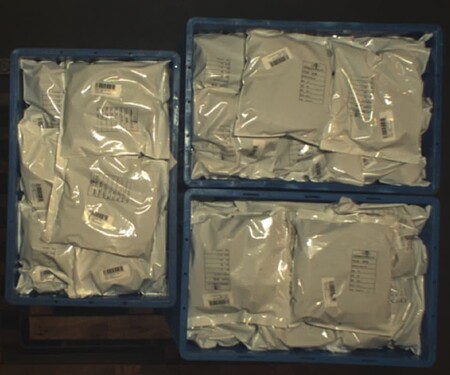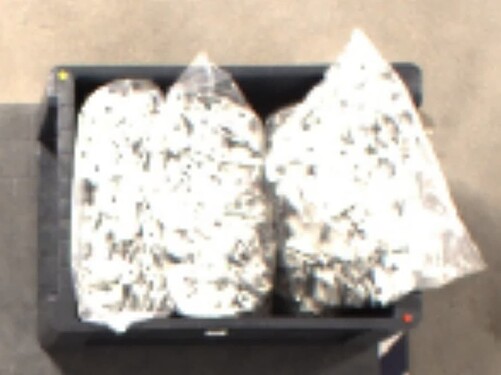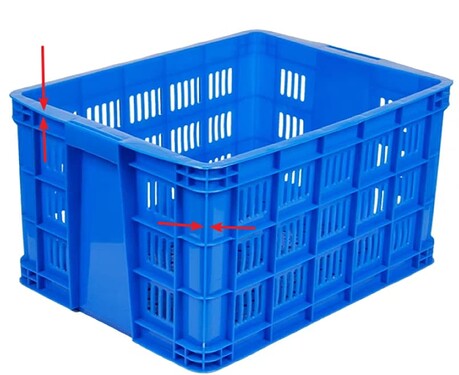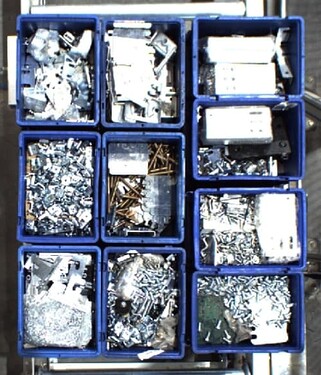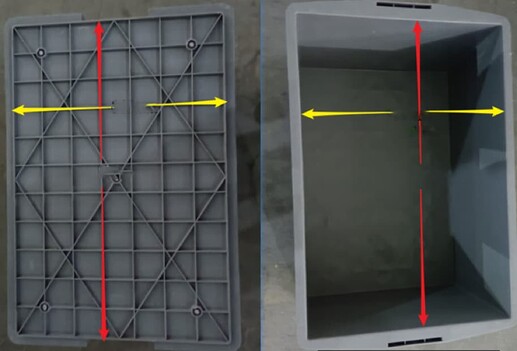Introduction
Target reader: solution engineers, layout planning engineers, mechanical design engineers, mechanism design engineers, etc.
Post overview: This post focuses on depalletizing open-top turnover boxes. It elaborates in detail on common challenges encountered in the industry, such as incoming materials for turnover boxes, materials inside the boxes, loading pallets, and corresponding solutions to address these challenges. This information provides significant guidance for the overall design of the depalletizing open-top turnover box solution, ensuring smooth progress through subsequent project phases.
Reflective materials in boxes
Issue: There may be reflections and other issues from materials inside the box that could interfere with vision recognition.
Solution: Introduce additional deep learning steps and iterate deep learning models based on material types and loading poses.
Overflowing materials inside boxes
Issue: Various materials are randomly stacked in the box, which may lead to overflow and other situations.
Solution: In the early stages of the project, negotiate with the end customer to standardize upstream materials to ensure that materials do not exceed the top edge of the box.
Turnover box sturdiness
Issue: The overall sturdiness of the turnover box is relatively low, especially when the thickness of the side walls is only 2-5 millimeters (or less). Due to long-term use, such boxes are prone to deformation, leading to collisions between the box and grippers during picking.
Solution: In the early stages of the project, negotiate with end-users to exclude low-quality turnover boxes. Additionally, conduct continuous inspections and implement regular updates and maintenance in the later stages.
Disordered materials in boxes
Issue: The materials inside the turnover box are placed disorderly, leading to a shift in the center of gravity and increasing the difficulty in gripper design.
Solution: In the early stages of the project, it is recommended to consult with end customers and suggest the uniform distribution of materials inside the turnover box to prevent shifts in the center of gravity from occurring.
Various turnover boxes used together on the same pallet
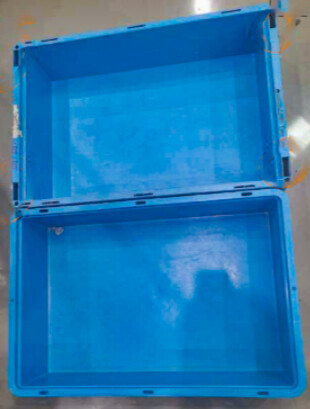
Issue: There may be a situation in which various types of turnover boxes are mixed for use within the customer’s factory: for the same pallet, turnover boxes with consistent dimensions may have different appearances, leading to poor matching effects and difficulties in picking.
Solution: In the project’s early phases, negotiate with the end-user, clarify technical difficulties and risks, and establish standardized criteria for the use of turnover boxes.
Improper stacking of adjacent turnover boxes
Issue: Due to the deformation of turnover boxes or differences in size between new and old ones, for example, the turnover box on the left cannot be inserted into the one on the right, making it difficult to connect the upper and lower layers. This situation leads to an increased disparity in the horizontal alignment of turnover boxes on the same layer, thereby complicating the picking process.
Solution: Establish standardized criteria for incoming materials, or pick up one turnover box at a time.
Pattern for turnover boxes of different sizes

Issue: The inner wall of the large box is smooth and reflective, adversely affecting the surface point cloud quality of the internal small box due to multiple reflections.
Solution: In the initial stages of the project, choose large boxes with non-reflective inner walls.
